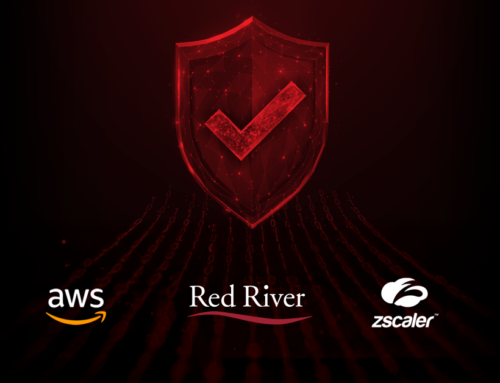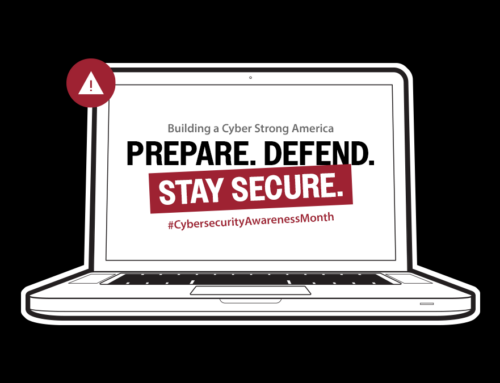
10 Governance, Risk and Compliance (GRC) Tools for Federal Contractors
Contractors awarded federal contracts are tasked with securing confidential and sensitive information. Heightened data protection measures such as Cybersecurity Maturity Model Certification (CMMC) created by the Department of Defense (DoD), among others, are mandates that call for industry leaders to also create a governance risk and compliance (GRC) posture. The same holds true for contractors in other sectors who wish to participate in lucrative work that drives profitability and company growth.
At Red River, we work closely with business leaders to ensure they have the IT GRC tools needed to meet the complex and shifting demands of the federal government. These are platforms and things industry leaders would be well served to consider about the governance, risk and compliance landscape.
What is a Governance Risk Compliance Framework?
A GRC framework helps organizations streamline processes, understand business exposure and meet regulatory requirements. The goal is to achieve objectives and increase profitability in an ethical manner. Companies typically reach out to managed IT firms with cyber security and GRC expertise to develop an overarching strategy that draws wide-reaching business elements under one umbrella. These are how the key aspects of a GRC framework function.
Governance Policies
A company’s governance policies are the general rules decision-makers follow to operate the organization. They usually include processes and how to provide transparency to key stakeholders. Governance policies are also instituted to protect shareholders and others from liability. At its core, governance determines the next steps in terms of cyber security, efficiency, communication and the methods used to meet industry standard regulations.
Risk Management
Risk management is a critical aspect of cyber security. Federal contractors are under enormous pressure to adhere to increasingly intense cyber security measures. Risk management involves using the latest deterrents to prevent incursions. However, the central issue as it pertains to IT GRC tools is using technology to understand corporate exposure.
Compliance
Meeting the wide variety of proposed rules may be the aspect of GRC that business professionals have the least control over. Regulatory compliance is primarily driven by state and federal lawmakers, as well as agencies tasked with drilling down on emerging threats to data privacy and dangers to national security.
The head-spinning number of regulations an organization must follow to remain compliant has overwhelmed operations that historically rely on small internal IT departments. These rank among the more ubiquitous data protection regulations government agencies require organizations to follow.
- California Consumer Privacy Act
- Cybersecurity Maturity Model Certification (CMMC)
- Federal Information Security Management Act
- Health Insurance Portability and Accountability Act (HIPAA)
- Payment Card Industry Data Security Standard
- The EU’s General Data Protection Regulation
Maintaining regulatory compliance has become an uphill climb for American companies due to the fact that the government employs a patchwork approach. Without a single, over-arching set of rules, enterprises find themselves getting fined and licenses suspended despite efforts to keep pace with changing mandates. The use of GRC in cyber security helps mitigate the risk of businesses having government contracts yanked or getting sidelined.
Why Federal Contractors Need GRC Tools
The intensely strict regulations promulgated by lawmakers and federal agencies are the driving reason why contractors must have a governance risk compliance framework in place. While IT GRC tools are not necessarily listed as a necessity when filing bids, they go hand-in-hand with meeting the demands of cyber security requirements and reporting. A smartly designed GRC plan helps companies adapt to the sometimes fast-changing regulatory landscape, mitigate risks and communicate with stakeholders.
Key Features to Look for in IT GRC Tools

Operating an organization in the digital age tasks industry leaders with onboarding the right tools, personnel and technologies to further business goals. Choosing the best IT GRC tools presents the same type of challenges as which cyber security approach to take or how to establish cloud-based infrastructure. There is no one-size-fits-all GRC governance risk compliance framework, which means someone will need to vet a variety of IT GRC tools to identify which work seamlessly with your operation. That being said, these are baseline features worth considering.
- Sync with Compliance: Identify the mandates that your company needs to comply with and work backward to review IT GRC tools that accomplish that goal. It’s important to keep in mind that you may need to meet the standards of state, federal and international data security policies. For example, corporations that do business in California, other states and Europe could be impacted by measures at all three levels. Be sure the tools you select support multi-level compliance.
- Risk Mitigation Features: The idea of risk management doesn’t occur in a vacuum. The tools you choose must support real-time deterrence, detection and response. One side of the risk management coin is understanding network vulnerability. The other is your organization’s ability to prevent a breach. Consider GRC tools that deliver exceptional monitoring abilities and alerts.
- Systems Integration: Not every GRC tool can be effortlessly integrated with your network. These IT tools will need to be capable of augmenting your governance risk and compliance position across the cloud, in-house system and endpoint devices. A thorough review of your system needs may be in order before adopting one or more GRC tools.
- Insightful Analytics: Things like customized dashboards enhance your ability to extract essential metrics and visualize emerging trends. That, in turn, helps professionals drill down on critical processes and data points. The appropriate IT GRC tools for your enterprise generate information that simplifies the decision-making process.
The GRC tools a corporation opts for must possess scalability ease. That’s largely because companies experience seasonal ebbs and flows, as well as growth spurts. It’s not cost-effective to pivot to a different application or process each time your company grows. The right tool typically allows you to expand its usefulness on an as-needed basis.
Case Uses of IT GRC Tools
One of the essential factors to consider when deciding on the best IT GRC tools for your business is how they further your auditing and reporting needs. This facet has reached critical mass, so to speak, for organizations that work in the military industrial base. After the U.S. Department of Defense (DoD) rolled out its CMMC mandate, more than 100,000 companies are now required to have cyber security audits conducted and report the results.
Adding to the complexity of the CMMC protocol, an operation could fall into one of three cyber hygiene levels, each with different compliance thresholds. A direct military contractor will need a CMMC-certified third-party firm to conduct an audit and report the findings to the DoD. Others may be able to self-attest — at least in theory. However, even these supply chain companies will need to conduct internal audits and report verifiable metrics to the Pentagon.
The point is that GRC tools are fast becoming part of the standard practices for outfits at every level of the military defense sector. The same generally holds true of the healthcare and financial industries, among others.
Top GRC Tools for Federal Contractors
The laws of supply and demand have not been lost on software developers in the governance risk and compliance niche. There is an abundance of available platforms that are tailored to further the GRC interests of businesses from wide-reaching sectors. Some are easily customized, and others provide the scalability necessary for up-and-coming organizations. These rank among the popular IT GRC tools worth assessing.
1: Archer Insight
Archer Insight has emerged as a preferred option in areas that include healthcare, finance, government, tech and manufacturing. Its ability to quantify risk makes it a good solution for outfits that sophisticated hackers may target more frequently than others. Archer Insight helps industry leaders place a laser focus on operational and IT cyber security threats and vulnerabilities. If your operation is considered a high-value target by threat actors, this platform delivers exceptional risk mitigation capabilities.
2. AuditBoard
Ranked among the leading Environmental, Social and Governance (ESG) Programs, AuditBoard augments an enterprise’s ability to understand its attack surface more clearly and potential risks. Using AI to advance its ability to provide collaboration opportunities, users gravitate to its dashboard analytics and integration aspects. AuditBoard streamlines risk management, allowing company leaders to make real-time decisions about data protection that buoy regulatory compliance.
3: Centraleyes
Centraleyes has been a darling in sectors that include healthcare, science, energy, finance and government. The platform is best known for its ability to help organizations manage risk exposure and meet regulatory compliance when faced with complicated cyber security mandates. Considered a user-friendly solution, it provides quick, accurate analytics from sources across a network. Given its self-assessment advantages, Centraleyes may be a suitable fit for companies dealing with CMMC audits and reporting.
4: Diligent HighBond
Known for its dashboard visibility and ability to generate efficient and accurate reports, Diligent HighBond caters to people who do not necessarily work in the IT space. It helps centralize and automate features that provide users with actionable GRC intelligence. One of the benefits of integrating Diligent HighBond is the fact it adheres to the National Institute of Standards and Technology (NIST) cyber security framework. The CMMC mandate is also largely based on NIST, making Diligent HighBond a solution worthy of consideration if you benefit from lucrative DoD contracts.
5: Drata
Perhaps the primary value of leveraging Data involves its ability to achieve compliance by streamlining audit readiness. It aids companies that need to collect and control information, which results in improved cyber hygiene. Drata also offers prefab frameworks that make monitoring, risk management and regulatory compliance easier.
6: IBM OpenPages
This AI-driven GRC tool crunches its risk management capabilities into a singular landscape. Combined with IBM Cloud Pak for Data, it tends to be one of the more adaptable risk detection, monitoring, management and reporting platforms in the GRC niche. Considered highly scalable, IBM OpenPages can form a foundation for an organization’s enterprise risk management (ERM).
7. LogicGate Risk Cloud
Designed to centralize and simplify a variety of risk management elements, LogicGate Risk Cloud employs an automated data collection facet that makes assessments and decision-making easier. It also ranks among the more customizable and scalable options. Users do not necessarily need extensive technical experience to generate reports. Its pre-designed templates and seamless integration make LogicGate Risk Cloud a viable solution for the right enterprise.
8: Resolver
One of the broad IT GRC tools, Resolver goes the extra mile in terms of risk management, self-auditing, third-party threat mitigation and regulatory compliance. Its data-driven software helps minimize the risk to and from third parties and aligns the interests of key stakeholders. If someone were to narrow down the benefits of Resolver to one core issue, it would be the platform’s ability to reduce potential incidents from external threat actors.
9: Riskonnect
Although effective for a variety of sectors, Riskonnect has been a go-to resource for corporations that leverage Salesforce CRM. The platform’s risk and compliance approach is balanced against its user-friendly dashboard, access to vendor information and task authorization. Riskonnect can be a pragmatic solution, particularly in the retail sector.
10: ZenGRC
Best known for its relentless cyber security monitoring capabilities, ZenGRC offers auditing efficiencies through a concentrated platform. The IT GRC tool helps evaluate risks presented by vendors and other third parties by including questions that are weighed against data privacy and security regulations.
It’s important to keep in mind that onboarding IT GRC tools is best considered in a broad context. Regulatory compliance continues to evolve in response to the shifting threat landscape. Recent GRC trends, such as enhanced AI, machine learning and continuous monitoring, may be harbingers of things to come. When choosing IT tools for your governance risk compliance framework, it may be prudent to keep an eye on customization and the agility of a platform to meet changing regulatory requirements.
Implement IT GRC Tools with the Help of Red River
At Red River, we work with organizations and agencies to craft GRC solutions that help organizations meet the standards set by regulatory bodies. If you are interested in taking your data security and compliance to the next level, contact us today. Let’s get the process started.

written by
Corrin Jones
Corrin Jones is the Director of Digital Demand Generation. With over ten years of experience, she specializes in creating content and executing campaigns to drive growth and revenue. Connect with Corrin on LinkedIn.




